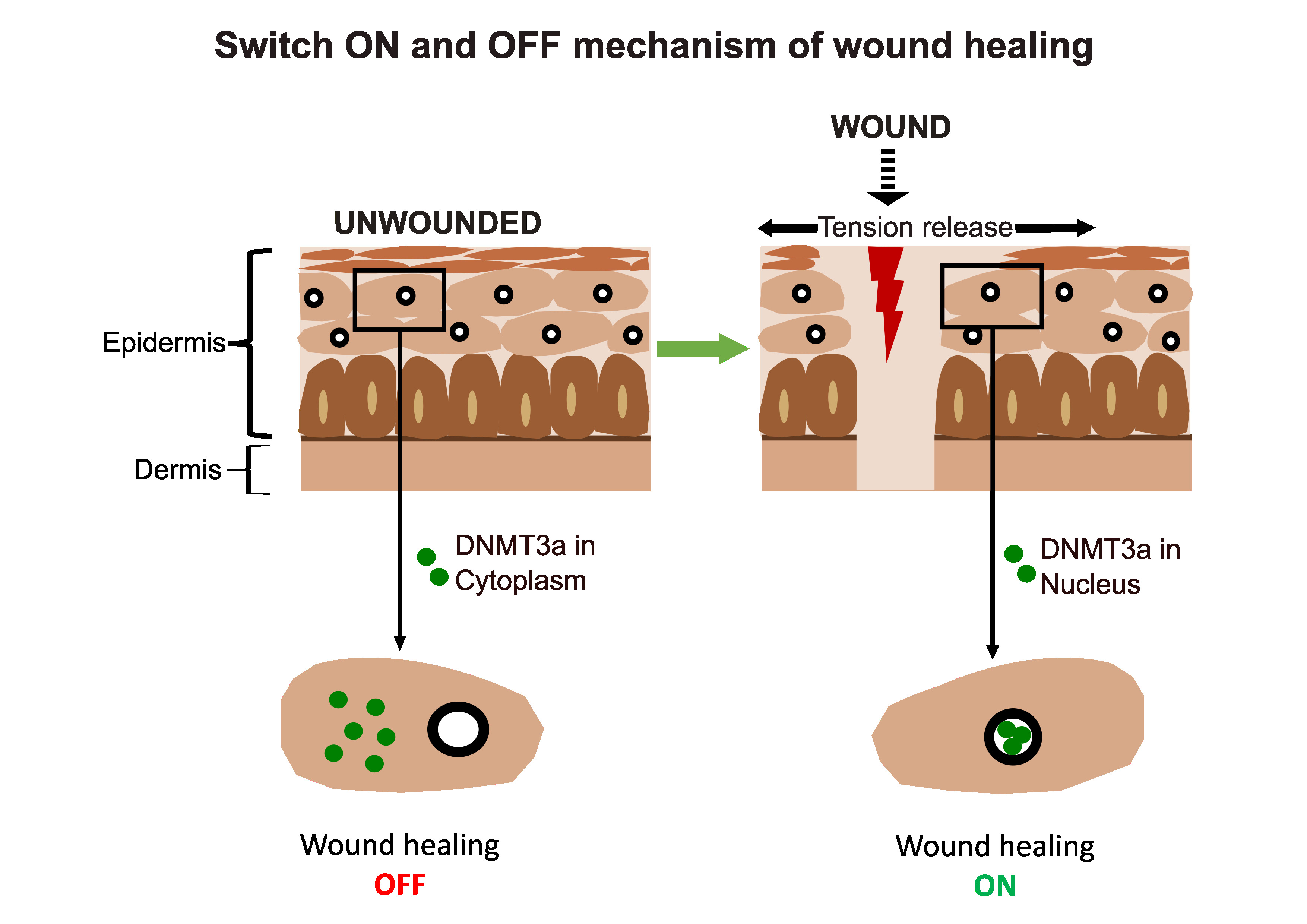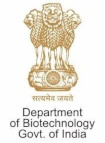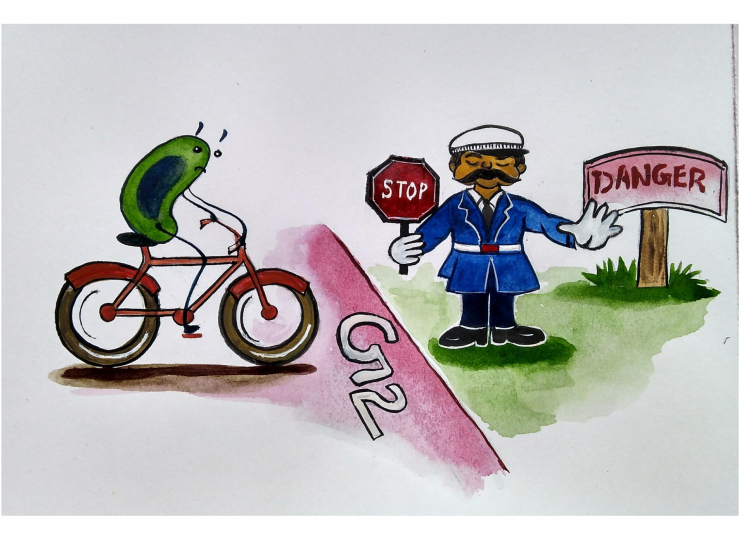Relieving cellular tension: a switch to promote wound healing
How does the skin heal wounds? The wound healing process involves a regulated sequence of biochemical events which is set into motion when there is an injury.What signals the skin to turn on wound healing response when it becomes injured? Understanding the signals responsible for initiating wound healing can provide important clues to kick-start wound healing when it is defective, for example in diabetic patients who suffer from non-healing wounds.
New research from Jamora lab at inStem has shed light on how skin cells sense wounds and switch on the wound healing response. Cells in the outermost epidermal layer of the skin are glued together tightly to form a barrier, that prevents microbe entry into, and water loss from the body. The tight binding of skin cells to each other causes tension that is similar to the surface of a tightly blown balloon. Wounds to the skin have a similar effect as poking a balloon with a pin - there is an immediate release of the built-up surface tension.
This release of tension causes an enzyme, DNMT3a, to enter the nucleus of the cell that houses our DNA. Once inside the nucleus, DNMT3a adds methyl groups to the DNA (a change to our genome known as epigenetics). Importantly, the researchers found that by modifying our DNA, DNMT3a can switch OFF some genes and turn on other genes that instruct the cell that a wound has happened and that it should start repairing itself.

Could impaired epigenetic regulation by DNMT3a be a cause of the faulty wound response observed in diabetic patients? Preliminary studies from the lab have found that DNMT3a activity is crippled in the mouse model of diabetic wound healing and further studies are in progress to determine whether this is also true for diabetic patients.
“The field of wound healing research is often focused on how skin cells heal an injury. However, how cells sense the injury in the first place is relatively under-explored. Among the various hypothesized mechanisms, we found that releasing tension in the skin cells leads to a wound response mediated by epigenetic players. We think that this discovery of how mechanical tension and epigenetic factors switch ON wound healing program can help us design novel therapies for non-healing wounds”, says Tanay Bhatt, lead author of the study.
Reference:
Initiation of wound healing is regulated by the convergence of mechanical and epigenetic cues
Bhatt, Tanay & Dey, Rakesh & Hegde, Akshay & Ketkar, Alhad Ashok & Pulianmackal, Ajai J & Deb, Ashim P, et al. (2022) . PLoS Biol 20(9):e3001777.DOI10.1371/journal.pbio.3001777
https://journals.plos.org/plosbiology/article/metrics?id=10.1371/journal.pbio.3001777
Publication date: September 16, 2022











